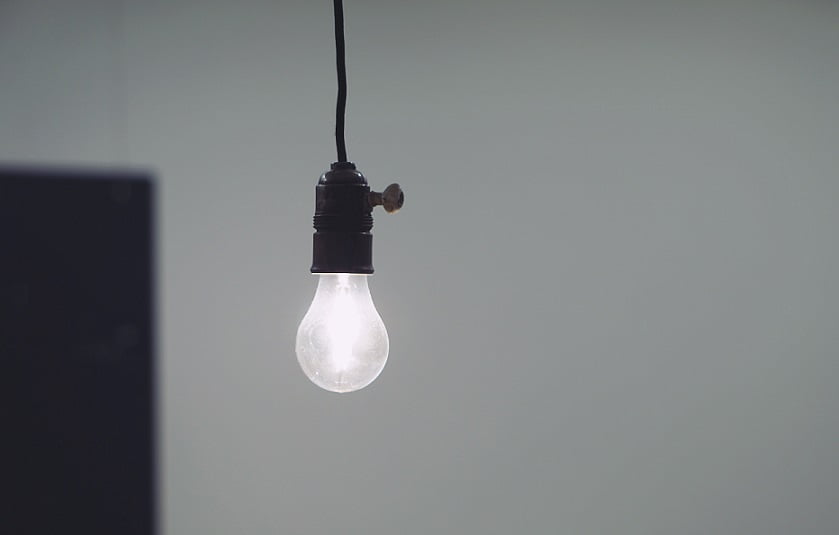What are the causes of flickering lights, and when should you be concerned?
Flickering lights can be a common occurrence, and although the occasional flickering of lights in your home is a bit of a nuisance, it should more often than not be normal and temporary. For flickering lights that persist, it is important to get a proper assessment of the issue at hand, since there may be a cause for concern, depending on the intensity and the frequency in which it occurs.
In some cases, flickering lights may be the symptom of a larger and more serious issue taking place within the home’s electrical system. Addressing the issue is a priority, since it can sometimes be a warning sign that, if ignored, could lead to disastrous consequences, such as house fires. If the lights in your home have suddenly begun flickering when it is not a regular occurrence, a licensed electrician should be called to investigate.
Causes of Flickering Lights
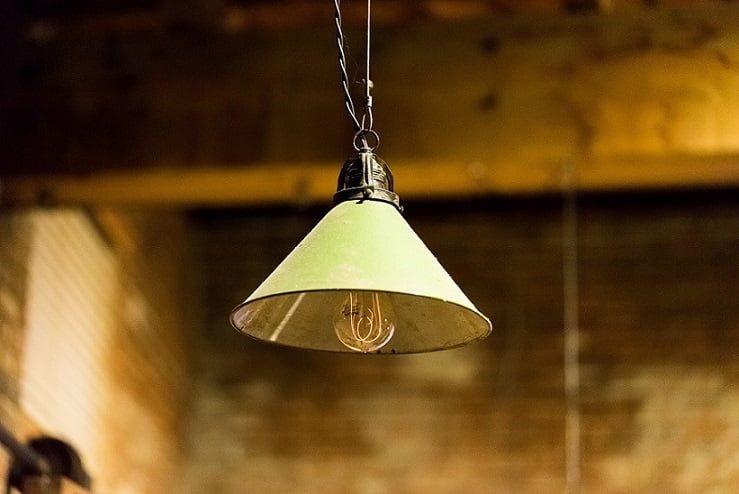
1.) An issue with the light bulb itself
Symptom: Only one light is flickering.
Problem:
This could mean that the light bulb is a dud, or it could be that the light bulb is loose within its socket or hasn’t been screwed in tightly enough. This is normal, as light bulbs can become loose over time, causing it to lose connection with the socket.
Flickering lights can also depend on the kind of light bulb being used and could be an indication that the wrong bulb type is being used, particularly when it is paired with a dimmer switch.
- Fluorescent light bulbs tend to flicker occasionally when turned on, especially in colder environments, and is not an issue to be concerned with if it is temporary and infrequent. However, these bulbs are incompatible with dimmer switches.
- LED light bulbs can commonly cause flickering lights when used with dimmer switches as well. Since dimmer switches are designed to handle higher loads of electricity, LED light bulbs are incompatible due to holding lower voltages.
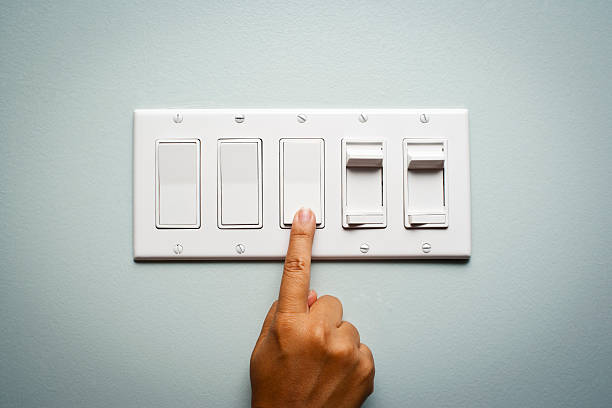
Solution:
This may sound silly or obvious, but the first thing would be to ensure that the light bulb has been screwed in tightly enough. Before doing anything with the bulb, be incredibly cautious and ensure that the light has been turned off to prevent being shocked or burned. If it has been screwed in properly and still is not working like it normally should, try replacing the light bulb with a new one.
When using dimmer switches, ensure that it is paired only with dimmable light bulbs, since they often do not work well with most non-dimmable ones.
If the problem still persists, it may be time to call a licensed electrician to take a look at the issue.
2.) Faulty fixture or light switch
Symptom: The lights are flickering in one room.
Problem:
This could be showing that there is a poor connection between the light bulb and the light switch or fixture.
Solution:
Try to gently wiggle the switch controlling the lights. If there is a flicker, toggle the switch off, and then on. If it stops, the switch may very well be the problem, and a licensed electrician should be called to have it replaced.
3.) Voltage fluctuation
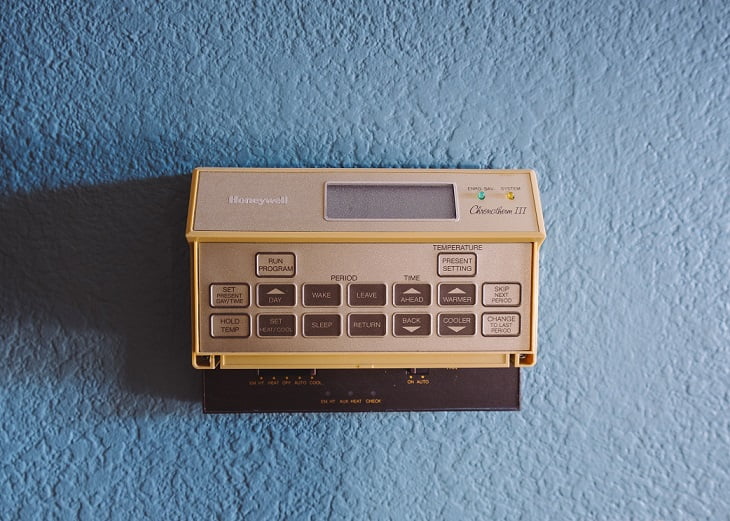
Symptom: The lights flicker when a large appliance powers on.
Problem:
If the lights flicker, blink, or dim when you turn on a major electrical appliance (such as heating, air conditioning, or washing machines), this could be the sign of an overloaded circuit. Larger home appliances add a high electrical load to the central circuit breaker on startup, meaning that these appliances could be pulling more electrical current than the circuit is able to handle.
Minor or brief flickering when the appliance comes on is normal. Even in electrical systems designed to withstand larger loads, some minor flickering can occur due to voltage drops.
However, if the flickering persists after startup or continues even after the appliance has stopped running, there may be a problem. Flickering lights that are consistent, unexpected, or severe could also be a sign that there is a problem with the appliance itself.
Solution:
The best course of action would be to call a licensed electrician to find the source of the problem. An electrician inspecting your electrical system can let you know whether an electrical service upgrade is in order.
Although minor voltage fluctuations are normal, your home should register between 115 to 125 volts of energy. A device called a voltmeter can be used by an electrician to check. A reading above 125 volts is an indication that there is a problem.
4.) Loose wiring connections
Symptom: Multiple lights flicker in a contained area.
Problem:
If the issue of flickering lights is within a single area of your home and multiple light fixtures are being affected, there could be a problem with your home’s circuitry. This would mean that the problem is systemic and should be addressed immediately.
This could be caused by outdated wiring or other older electrical components, which need to be updated and replaced by an electrician. Old wiring is one of the leading causes of house fires.
When there are loose connections, electrical currents tend to travel over the gaps, creating a high resistance point that leads to dangerous point heating. Even a single loose connection could be dangerous, since it puts the entire system at risk and is a major cause of electrical fires.
Solution:
A licensed electrician should be called to check the issue more carefully. In this case, the issue would be urgent, since a loose connection can be dangerous.
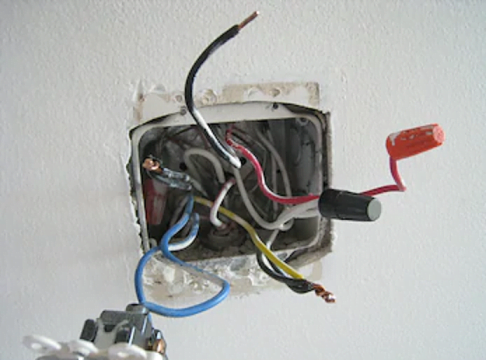
5.) Problem with electrical service connection
Symptom: Lights are flickering all over the house.
Problem:
Flickering lights that occur in more than one area of the house could perhaps be an indication that there is a problem in the connection to an electrical service. It is likely that the issue is at the meter box or main service cable connection, as this can be caused by loose service conductors in a home’s central electrical panel.
Loose connections and high capacity wires are a fire hazard, so this should be addressed immediately.
Solution:
A licensed electrician should be called as soon as possible to inspect and resolve the issue.
6.) High electrical usage from neighbours
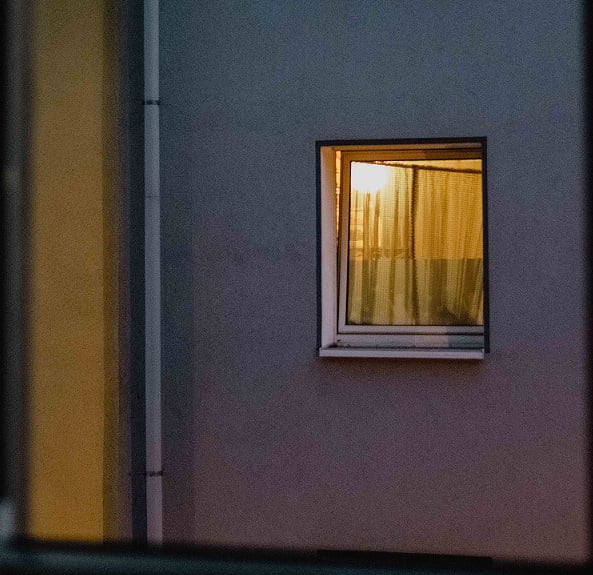
Symptom: Your neighbours are also experiencing flickering lights.
Problem:
Since your home is likely sharing a transformer with surrounding homes, a neighbour’s heavy electrical usage will impact your supply.
However, if the issue of flickering lights is occurring throughout neighbourhood, the problem probably originates from electrical company itself rather than any individual home’s electrical service.
Solution:
Talk to the neighbour to see if they are experiencing the same problem. If it is out of their control, the problem should be reported to the electrical company, since there is likely to be an issue with the electrical utility service. Contacting the electrical company will allow for repairs.
Regardless of the cause, it’s important to resolve the issue of flickering lights as soon as possible. Even if the issue may appear to be minor, flickering lights could be an indication of an underlying issue with the home’s electrical wiring, which is likely to present a fire hazard.
Have your lights started flickering for an unknown reason? Do you need a licensed electrician to arrange an inspection?

Contact MADE ELECTRIC today! We are a trusted electrical contractor that operates in Toronto and the GTA, with a professional and fully licensed team. We can provide you with peace of mind as our trained and certified electricians identify and fix issues with your flickering lights. After the work is done, we can also arrange for another inspection to be done on your home to guarantee the safety of you, your family, and your property.
We can be reached through our contact page, and are also happy to receive your calls at +1 (833) 623-3247, or e-mails at info@madeelectric.ca.

